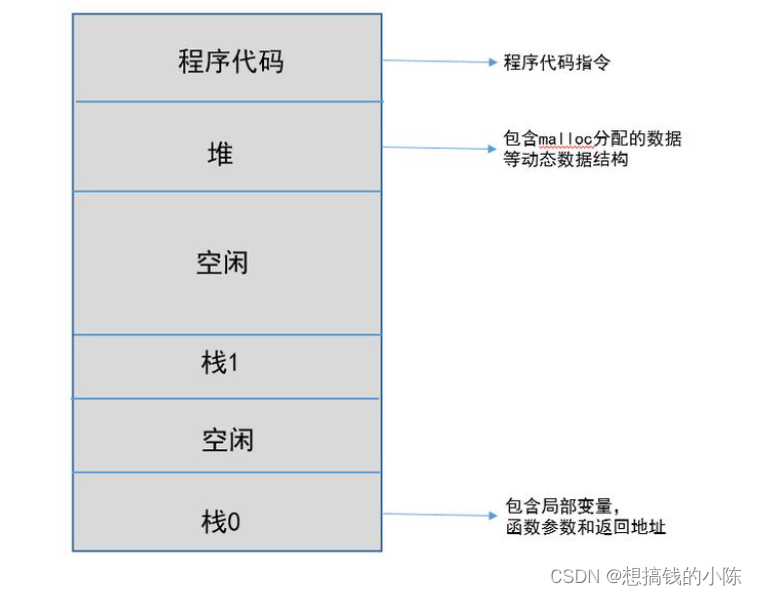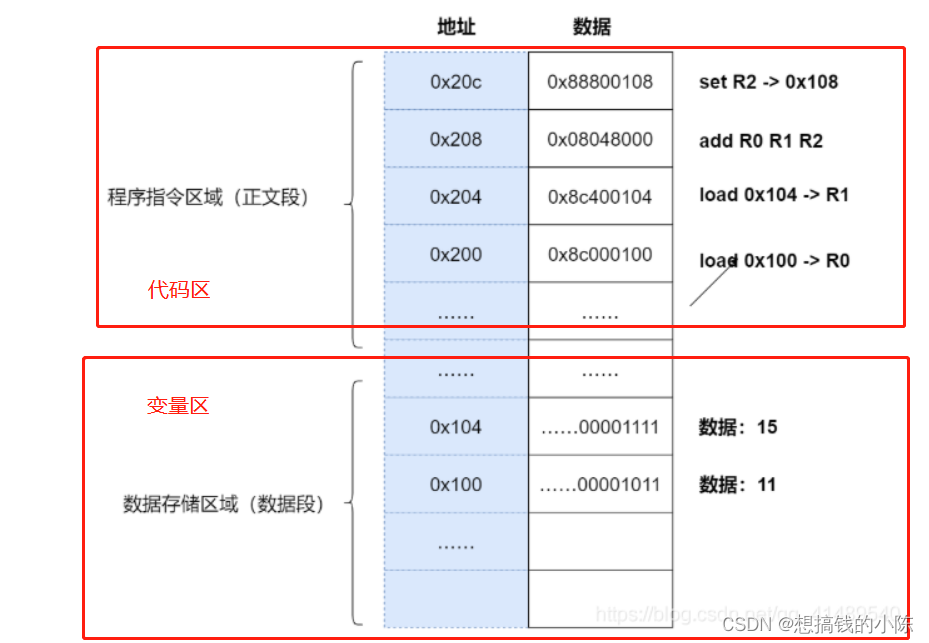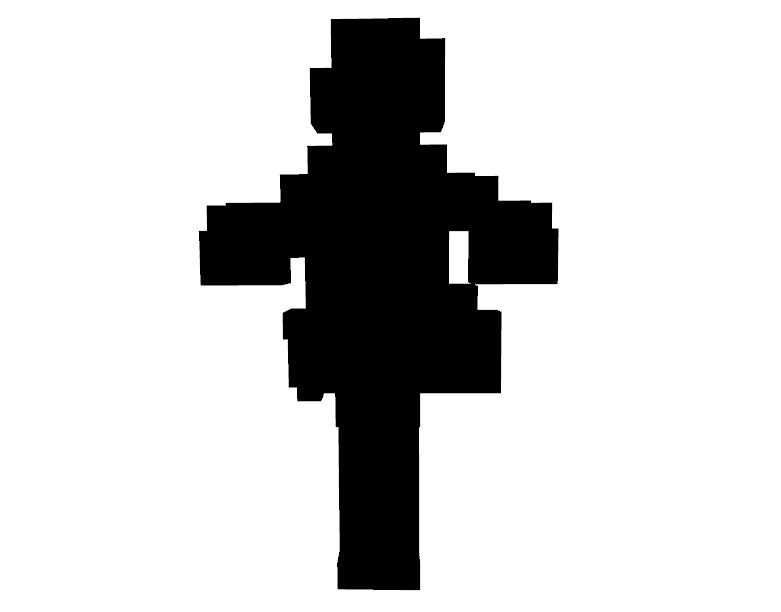当前位置:网站首页>Replace convolution with full connection layer -- repmlp
Replace convolution with full connection layer -- repmlp
2022-07-02 07:52:00 【MezereonXP】
Replace convolution with full connection layer – RepMLP
This time I will introduce you to a job , “RepMLP: Re-parameterizing Convolutions into Fully-connected Layers for Image Recognition”, It's recent MLP A representative article in the upsurge .
Its github Link to https://github.com/DingXiaoH/RepMLP, Energetic friends can go for a run , Take a look at the code .
So let's go back , Previous work based on convolutional Networks . The reason why convolution network can be effective , To some extent, it captures spatial information , Spatial features are extracted through multiple convolutions , And basically cover the whole picture . Suppose we put pictures “ Beat flat ” And then use MLP Training , Then the characteristic information in space is lost .
The contribution of this article lies in :
- Fully connected (FC) Global capabilities of (global capacity) as well as Location awareness (positional perception), It is applied to image recognition
- A simple 、 Platform independent (platform-agnostic)、 Differential algorithm , To convolute and BN Merge into FC
- Sufficient experimental analysis , Verified RepMLP The feasibility of
The overall framework
Whole RepMLP There are two stages :
- Training phase
- Testing phase
For these two stages , As shown in the figure below :

It looks a little complicated , Let's take a look at the training phase alone .
First of all Global perception (global perceptron)

It is mainly divided into two paths :
- route 1: The average pooling + BN + FC1 + ReLU + FC2
- route 2: Block
We remember that the shape of the input tensor is ( N , C , H , W ) (N,C,H,W) (N,C,H,W)
route 1
For the path 1, First, average pooling converts input into ( N , C , H h , W w ) (N,C,\frac{H}{h},\frac{W}{w}) (N,C,hH,wW), Equivalent to scaling , Then the green part indicates that the tensor “ Beat flat ”
That is, to become ( N , C H W h w ) (N,\frac{CHW}{hw}) (N,hwCHW) The tensor of shape , Through two layers FC After the layer , Dimensions remain , Because the entire FC It is equivalent to multiplying left by a square matrix .
Eventually the ( N , C H W h w ) (N,\frac{CHW}{hw}) (N,hwCHW) Shape output reshape, Get a shape that is ( N H W h w , C , 1 , 1 ) (\frac{NHW}{hw}, C, 1, 1) (hwNHW,C,1,1) Output
route 2
For the path 2, Directly enter ( N , C , H , W ) (N,C,H,W) (N,C,H,W) convert to N H W h w \frac{NHW}{hw} hwNHW individual ( h , w ) (h,w) (h,w) Small pieces , Its shape is ( N H W h w , C , h , w ) (\frac{NHW}{hw},C,h,w) (hwNHW,C,h,w)
Finally, the path 1 And the path 2 Add the result of , Because the dimensions are not right , But in the PyTorch in , Automatic copy operation , That's all ( h , w ) (h,w) (h,w) The size of each pixel of the block , Will add a value .
The output shape of this part is ( N H W h w , C , h , w ) (\frac{NHW}{hw},C,h,w) (hwNHW,C,h,w)
Then enter Local awareness and Block perception Part of , As shown in the figure below :
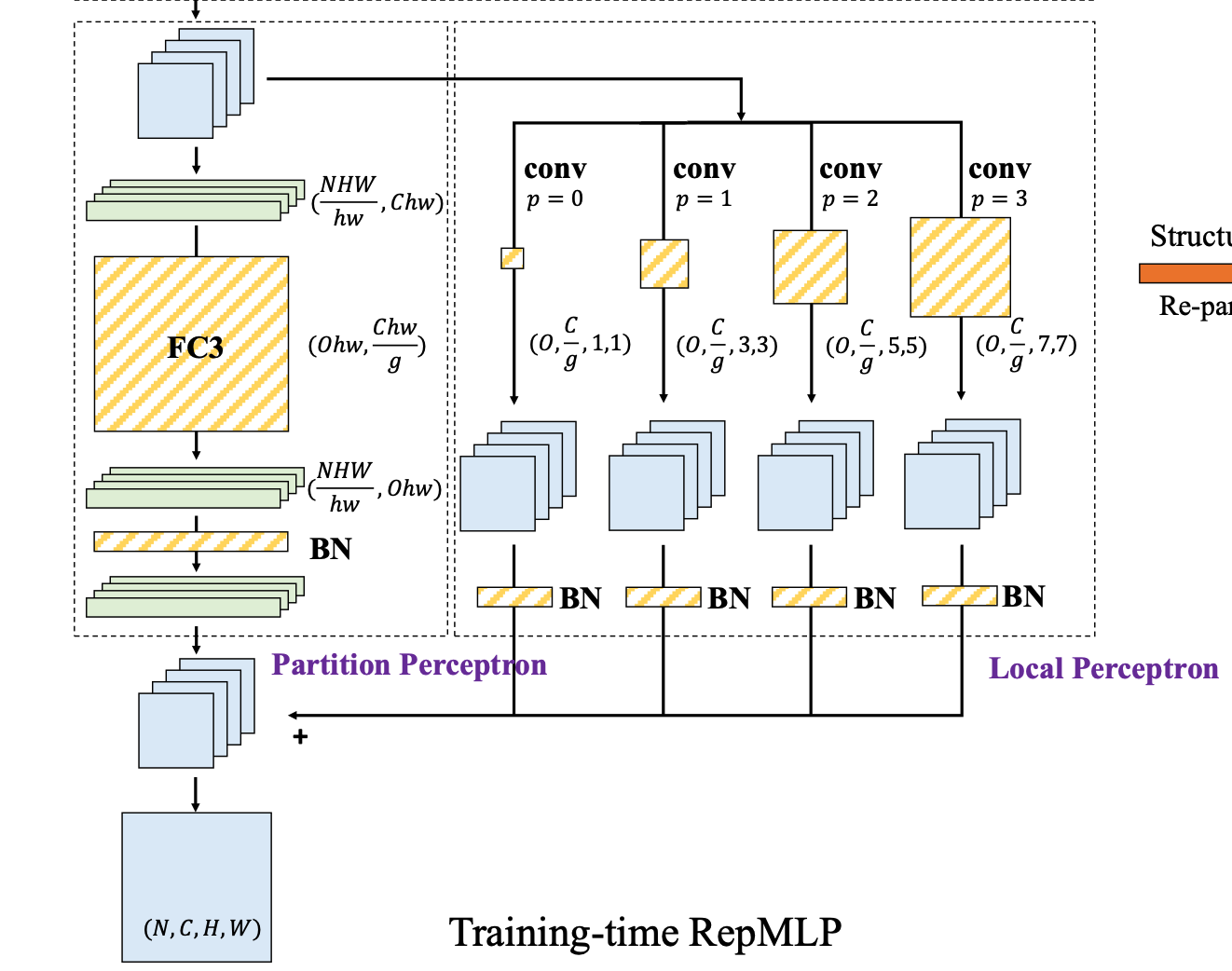
about Block perception (partition perceptron)
First , take 4 The tensor of dimension is plotted as 2 dimension , namely ( N H W h w , C , h , w ) (\frac{NHW}{hw},C,h,w) (hwNHW,C,h,w) become ( N H W h w , C h w ) (\frac{NHW}{hw},Chw) (hwNHW,Chw)
then FC3 It's a reference Grouping convolution (groupwise conv) The operation of , among g g g Is the number of groups
Original FC3 Should be ( O h w , C h w ) (Ohw,Chw) (Ohw,Chw) A matrix of , But in order to reduce the number of parameters , Used In groups FC(groupwise FC)
Packet convolution is essentially grouping channels , Let me give you an example :
Suppose the input is a ( C , H , W ) (C,H,W) (C,H,W) Tensor , If we want the output to be ( N , H ′ , W ′ ) (N,H',W') (N,H′,W′)
Usually, the shape of our convolution kernel is ( N , C , K , K ) (N,C,K,K) (N,C,K,K) , among K K K It's the size of the convolution kernel
We are right on the channel C C C Grouping , Every time g g g A group of channels , Then there is C g \frac{C}{g} gC A set of
For each group individually , Convolution operation , The shape of our convolution kernel will be reduced to ( N , C g , K , K ) (N,\frac{C}{g},K,K) (N,gC,K,K)
ad locum , grouping FC That is, the number of channels C h w Chw Chw Group and then pass each group FC, The resulting ( N H W h w , O , h , w ) (\frac{NHW}{hw}, O,h,w) (hwNHW,O,h,w) Tensor
after BN layer , The tensor shape remains unchanged .
And for Local awareness (local perceptron)

similar FPN Thought , Group convolution of different scales is carried out , Got it 4 The shape is ( N H W h w , O , h , w ) (\frac{NHW}{hw}, O,h,w) (hwNHW,O,h,w) Tensor
Add the results of local perception and block perception , Got it. ( N , O , H , W ) (N,O,H,W) (N,O,H,W) Output
Here you might ask , Isn't there still convolution ?
This is just the training stage , In the reasoning stage , Will throw away the convolution , As shown in the figure below :
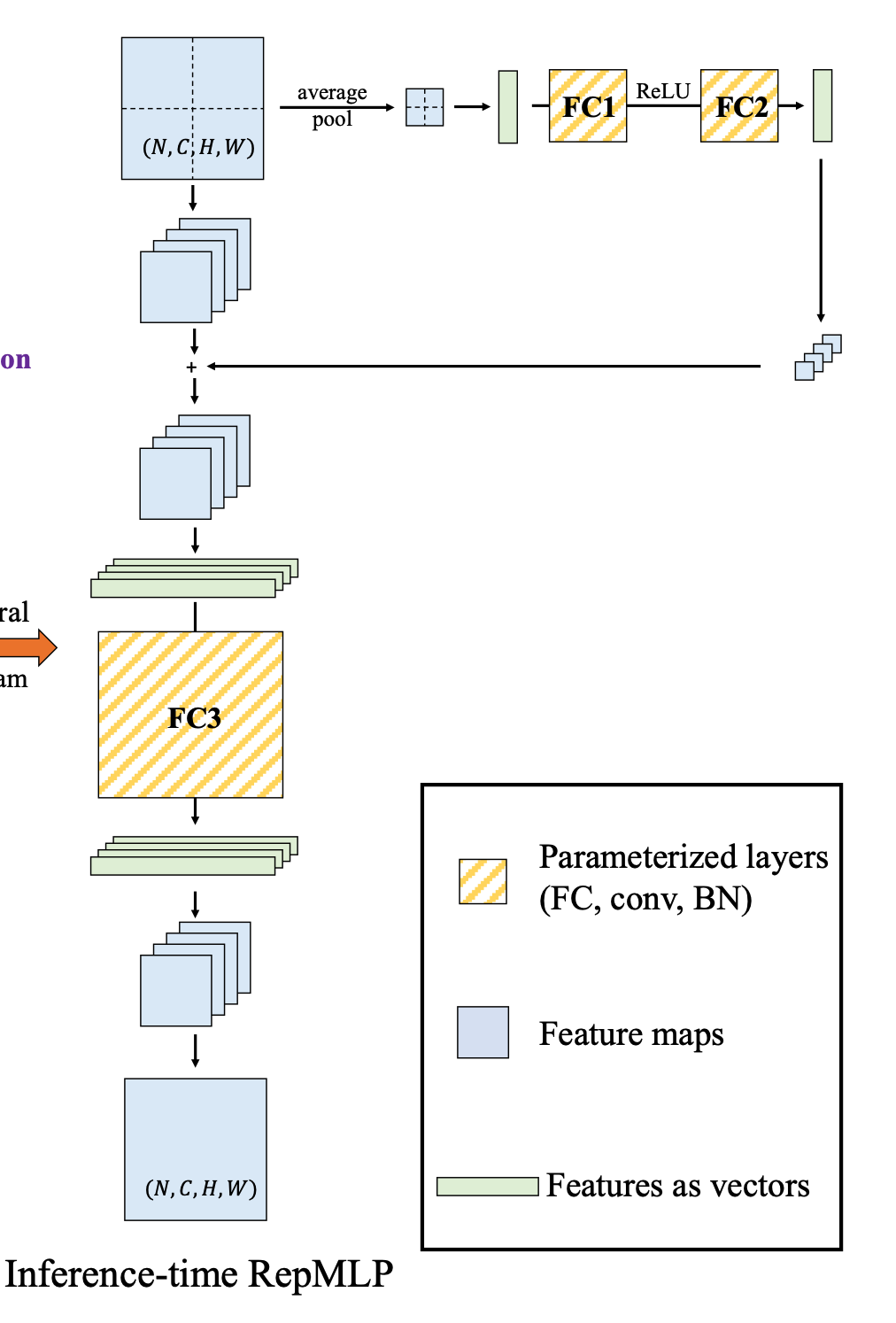
thus , We use it MLP Instead of a convolution operation
experimental analysis
The first is a series of Ablation Experiment (Ablation Study), stay CIFAR-10 Test on dataset
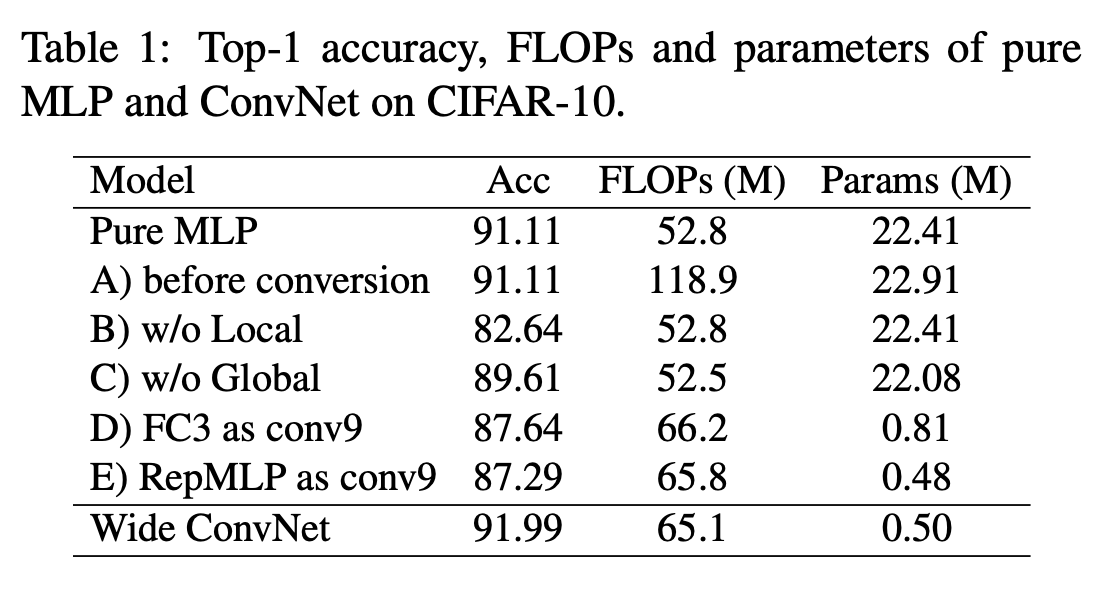
A The condition is to keep when inferring BN Layer and the conv layer , The results have not changed
D,E The conditions are to use a 9x9 Instead of the convolution layer FC3 And the whole RepMLP
Wide ConvNet It is to double the number of channels of the original network structure
The results show the importance of local perception and global perception , At the same time, it has no effect to remove the convolution part when inferring , Realized MLP Replacement
Then the author replaced ResNet50 Some of block, Tested

Replace only the penultimate residual block , There are more parameters , But the accuracy has increased slightly
If we replace more convolution parts completely

The parameter quantity will increase , The accuracy will also increase slightly
边栏推荐
- Apple added the first iPad with lightning interface to the list of retro products
- 基于onnxruntime的YOLOv5单张图片检测实现
- MoCO ——Momentum Contrast for Unsupervised Visual Representation Learning
- win10+vs2017+denseflow编译
- conda常用命令
- Win10 solves the problem that Internet Explorer cannot be installed
- 【MobileNet V3】《Searching for MobileNetV3》
- Gensim如何冻结某些词向量进行增量训练
- Translation of the paper "written mathematical expression recognition with bidirectionally trained transformer"
- 【BiSeNet】《BiSeNet:Bilateral Segmentation Network for Real-time Semantic Segmentation》
猜你喜欢
随机推荐
win10解决IE浏览器安装不上的问题
【Paper Reading】
PHP returns the corresponding key value according to the value in the two-dimensional array
Timeout docking video generation
【Batch】learning notes
Generate random 6-bit invitation code in PHP
自然辩证辨析题整理
open3d学习笔记二【文件读写】
Sorting out dialectics of nature
Latex formula normal and italic
Label propagation
[CVPR‘22 Oral2] TAN: Temporal Alignment Networks for Long-term Video
【Programming】
Pointnet understanding (step 4 of pointnet Implementation)
CPU的寄存器
open3d学习笔记四【表面重建】
jetson nano安装tensorflow踩坑记录(scipy1.4.1)
【多模态】CLIP模型
MMDetection安装问题
Win10+vs2017+denseflow compilation
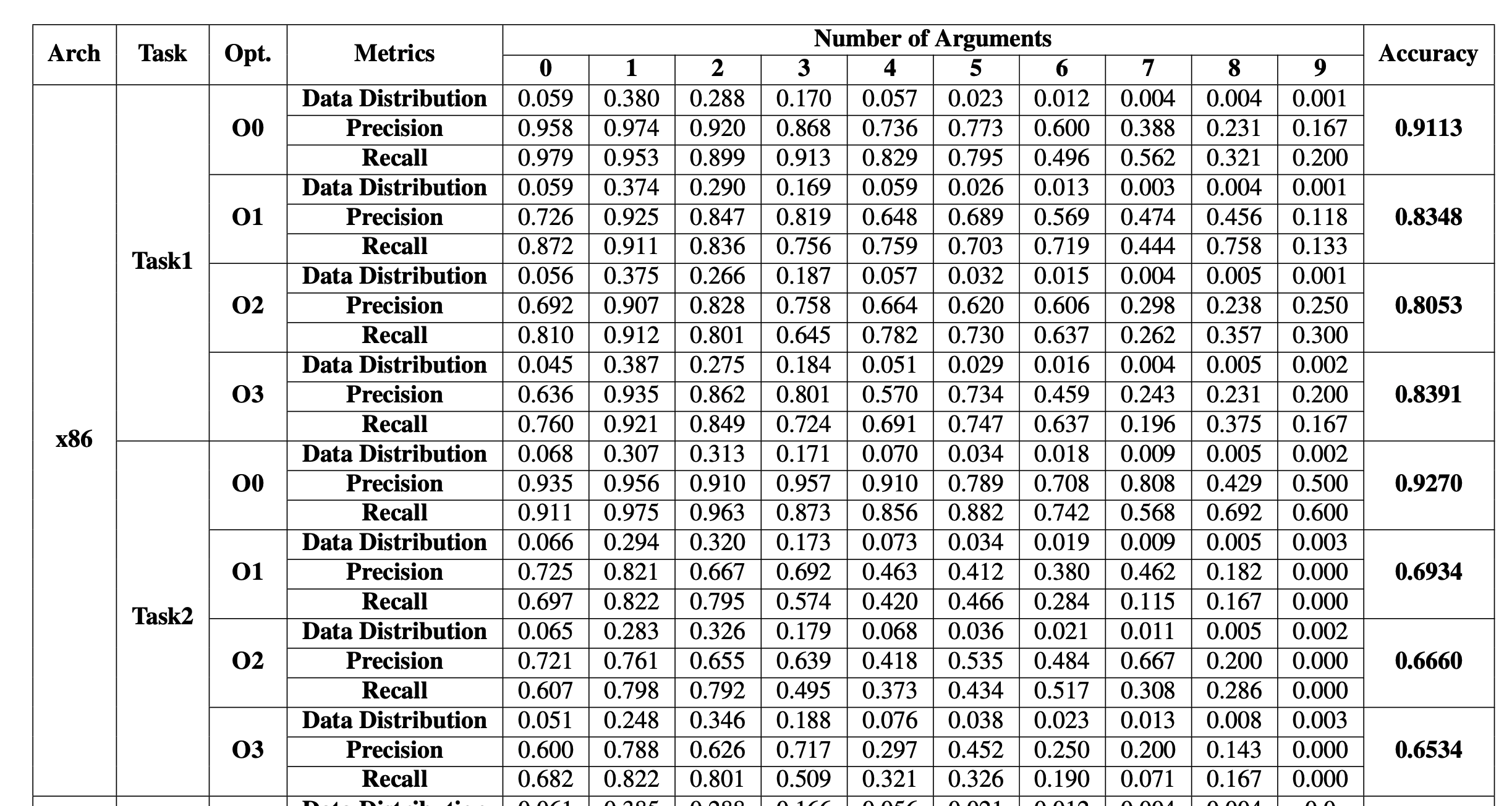
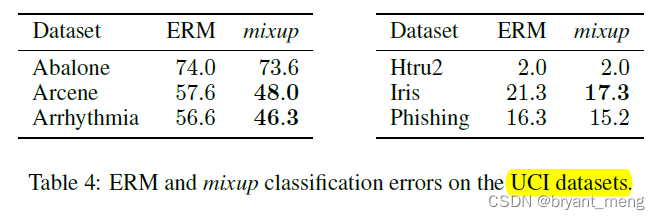
![[in depth learning series (8)]: principles of transform and actual combat](/img/2e/89920de2273b6f1bc3b21a19c2ecbe.png)
